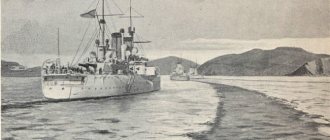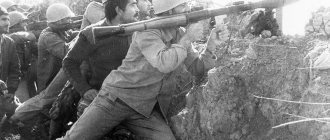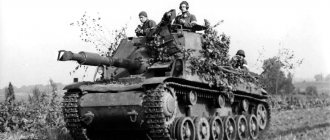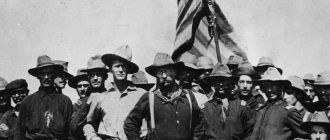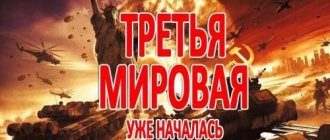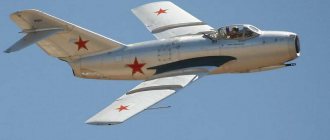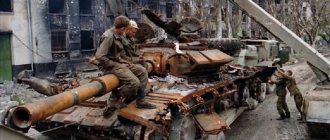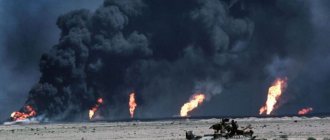On the night of Wednesday, January 8, Iran attacked a US air base in Iraq. Tehran called the missile strike a response to the assassination of the commander of the Quds Force, General Qassem Soleimani, in Baghdad. If statements by the Islamic Revolutionary Guard Corps (IRGC) are to be believed, the attacks may continue. Iran, in particular, threatens to attack Dubai and Israeli Haifa. The parties to the conflict pointedly linked what was happening with a prelude to a large-scale war. What could this clash mean for the United States? What weapons does Iran have and where will its missiles reach? The answers are in the Lenta.ru material.
Nuclear weapons and ballistic missiles
Currently, Iran does not have nuclear weapons, and is using the intensification of uranium enrichment work as blackmail to weaken the US sanctions regime, which undermines the socio-economic stability of the Islamic Republic. In accordance with the Joint Comprehensive Plan of Action (JCPOA), concluded in July 2015 by Iran with the United States, Russia, China, the United Kingdom, France and Germany, the former committed to maintaining a uranium enrichment level of 3.67 percent over the next 15 years, with a total The reserve of uranium enriched to this level is no more than 300 kilograms.
After Washington’s unilateral withdrawal from this deal in May 2018, Tehran announced the first stage of reducing its obligations, and a month later - the second. In July 2022, the International Atomic Energy Agency (IAEA) confirmed that Iran had exceeded the level of uranium enrichment specified in the terms of the JCPOA.
Iran's most formidable weapons are ballistic missiles, which are the main means of deterring the United States, Israel and Saudi Arabia from directly attacking the Islamic Republic. The maximum range of Iranian ballistic missiles is estimated at 2,000 kilometers, which is theoretically enough to destroy targets on the territory of the Jewish state. In addition to ballistic missiles, the flight path of which can be relatively easily predicted, Tehran is actively developing cruise missiles and flying drones capable of maneuvering at low altitudes, which makes them difficult to detect by missile defense systems.
Regions targeted by Iranian missiles
Image: DIA, D3 Design
Missile weapons
A description of Iran's armed forces would be incomplete without mentioning the short- and medium-range ballistic missiles at their disposal.
Currently, Iran has a significant number of North Korean and domestically produced missiles. Iran's main ballistic missiles are Shihab-1 and Shihab-2 - analogues of the Soviet SCAD ballistic missile of various versions. The technology to produce these missiles was transferred to Iran, most likely from North Korea. Shihab-1 can hit targets at a distance of up to 300 kilometers, and Shihab-2 - up to 700, and also has higher accuracy than its predecessor. Iran has also launched the production of Shihab-3 missiles, which have a flight range of up to 1,500 kilometers, and longer-range and more accurate ballistic missiles are being developed.
Quantity instead of quality
Serious military action on Iranian territory is also unlikely, since the country has managed to form a restricted access and maneuver zone along its borders. For example, the southern coast of the Islamic Republic from the Persian Gulf, the Strait of Hormuz and the Gulf of Oman is protected by diesel-electric submarines of Soviet (Russian) and North Korean origin, numerous combat boats with anti-ship missiles and torpedoes, as well as minefields. Although the US Navy is orders of magnitude stronger than the Iranian “mosquito fleet”, a direct collision less than 300 kilometers from the Iranian coast would cause Washington much greater financial and reputational losses than Tehran.
Among other weapons that Iran could use in the event of hostilities with the United States, it is first of all worth noting the S-300 Favorit anti-aircraft missile system purchased from Russia and Iranian analogues created on its basis, as well as various versions of the Fateh-110 mobile missile with with a range of about 300 kilometers.
Talk about the presence of a modern air force in Iran, which has at its disposal several dozen obsolete Western and Soviet combat aircraft (in particular, the F-14 Tomcat, F-4 Phantom II, F-5, MiG-29 and Su -24MK), not necessary. Instead, the Islamic Republic was able to establish the production of numerous attack drones, which, in the event of a potential conflict, can cause serious trouble to the enemy only through a massive attack.
Main locations of Iranian military aviation (Fighter Base)
Image: DIA, D3 Design
Separately, it is worth noting Iran’s good capabilities in the field of electronic warfare (EW), largely thanks to cooperation with Russia, as well as the largest network of protected underground fortifications in the Middle East, capable of preserving intact not only the infrastructure for launching ballistic missiles, but also the lives of the country’s leadership. It is also impossible not to notice that the possibility of the United States and its allies waging a ground war on the territory of Iran, which has a complex geographical terrain and a large area, is practically excluded - just pay attention to the protracted nature of such conflicts in neighboring Afghanistan. Additionally, unlike Afghanistan, Iran has approximately 1,900 tanks, including the T-72S, 2,600 infantry fighting vehicles (IFVs) and 2,000 multiple launch rocket systems (MLRS).
Naval forces
The Iranian Army Navy ( 18 thousand military personnel, including 2600 marines) consists of:
29 submarines , of which:
- 3 diesel submarines of Project 877EKM "Halibut" of Russian production, delivered 1992-1996.
- the rest are Iranian-developed ultra-small submarines "Qadir"
69 surface combatants , of which:
- 7 British built corvettes
- the rest are missile and patrol boats of various projects of French, American and Chinese construction
The fleet also includes:
- 4 minesweepers
- 24 landing ships
- about 40 auxiliary vessels
Naval aviation ( 2,600 troops) uses:
- 3 Lockheed P-3 Orion coastal patrol aircraft
- 16 light aircraft
- about 13 transport helicopters Sikorsky S-61 Sea King (“Sikorsky Es-61 Sea King”) and CH-53 Sea Stallion (“S-53 Sea Stallion”)
- 17 light helicopters
The IRGC Navy ( 20 thousand military personnel, including 5 thousand marines) has:
- 113 patrol boats of various types
- 4 landing ships
- a small number of auxiliary vessels
Deferred issue
The solution to the Iranian problem, which boils down to the fact that the religious regime that has developed in the Asian country poses an existential threat primarily to the United States and Israel, is so far seen in the latter countries not on a military plane, but on an economic one. It should be noted that for some time this approach was successful - currently the nominal GDP of the Islamic Republic per capita does not exceed $6,000 (the indicator calculated using purchasing power parity (PPP) cannot be considered correct, since it does not take into account the real quality of products produced by the country under sanctions).
Nevertheless, the policy of ultimatums pursued by US President Donald Trump towards China and the European Union, as well as the complicating relations with Turkey and Russia, leaves Iran some chance.
Iranian Armed Forces
Iran has one of the proudest military traditions in the world, with much of its history involving military campaigns under warring monarchs. Reza Khan, the founder of the Pahlavi dynasty, was an officer before his coronation as Shah. In 1915, Reza Khan was promoted to colonel.[3] In the Persian Cossack division he rose to the rank of brigadier general, and in October 1920 he replaced the commander of Russian Colonel Vsevolod Staroselsky.[4]
Iran's modern military history is a combination of tragedy and failure, but Iran ultimately escaped external subjugation and significantly modernized the country's security structures.[5] Over the centuries, the Persians carried out many military operations, and in many cases their victory was based not on numerical, but on technical advantages.[6]
The Sassanids continued the military tradition of the Achaemenids. The empire reached its peak under Shah Khosrow I Anushirvan (reigned 531–579).[7][8]
Under the Safavid dynasty (1501–1736), the consolidation of power occurred through a combination of military might and religious fanaticism.[9]
The ruling elite under the Qajar dynasty (1796–1925) failed to create a strong and effective army. As a result, Iran became the object of geopolitical redistribution between Great Britain and the Russian Empire.[10]
During the Qajar era, the most effective military unit was the Persian Cossack Brigade, which was created in 1879 after negotiations with the Russian Empire. The brigade was deployed in Tehran, and its commander reported directly to the Russian Minister of War. It was in this brigade that Reza Khan began his service. During this period, many Iranian and foreign observers believed that the brigade was the main lever of influence of the Russian Empire in Iran. The British tried in every possible way to prevent Iran from embarking on broader reforms to put the country on the path to development. On the one hand, London called on the Shah's government to begin reforms, and on the other hand, it blocked all such attempts.[11] This continued for many decades until 1925, when a new dynasty under the leadership of Reza Khan came to power.
In 1910, the Persian government asked US President William Howard Taft to provide technical assistance in reorganizing the country's financial system. The following year, Washington sent a four-member team of experts to Iran under the leadership of Morgan Shuster.[12] As an employee, he thought he was dealing with the Iranian government. But he was very mistaken. Neither Russia nor England wanted to see a foreign country on the Iranian chessboard.[13] After eight months of work, the Russian Empire gave the Iranian government 48 hours to expel Shuster from the country and sent Cossack regiments to Tehran. Despite the fact that Shuster's mission ended in failure, this fact gave Iran the opportunity to receive support from a third party, with the hope that with its help Tehran could free itself from Russian-British influence. We can say that it was from the time of the Pahlavi dynasty that close cooperation between the United States and Iran began. Based on these relationships, Shah Mohammad Reza Pahlavi modernized the army and intelligence services - in the 1970s, the Shah's army was recognized as one of the strongest forces in the region.[14] The Pahlavi dynasty, with the support of the West, achieved what Iranian rulers had failed to achieve over the past 200 years - an impressive strengthening of the armed forces.[15]
USA and the modernization of the Shah's army
In 1942, the United States of America began active military activity in Iran. Several agreements were concluded between the two countries, which marked the beginning of many years of activity of three American military missions in Iran - ARMISH, MAAG, GENMISH - which covered all the country's armed forces, including the command training system.
In the 1960s, with the assistance of the United States and CENTO member countries, Iran implemented several phased plans for the reorganization and modernization of its armed forces (Ef-Shin Plan, Taj Plan).
In the first half of the 1970s, objectively favorable political, financial and economic conditions developed for the Shah’s regime both within the country and abroad for the implementation of the pragmatist policy of the Shah, aimed at transforming Iran into a regional superpower by increasing its military power.
Work to improve the Iranian armed forces was carried out in such areas as: increasing the number of personnel and intensifying the training of officers, qualitative and quantitative growth of weapons and military equipment supplied to the troops, intensifying combat training of troops and strengthening the ideological indoctrination of personnel.
As a result, the number of personnel in the Iranian armed forces increased two and a half times (from 161 thousand people in 1970 to 415 thousand in 1978). The command staff has increased significantly.
The modernization of the armed forces strengthened the Shah's power and regional ambitions.[16] The following figures reflect the imperial ambitions of the Shah - to rapidly transform Iran with powerful armed forces, entering the top five in terms of the power of the armed forces: over 17 years, the country's military budget has grown 12 times.
- 1953 – $67 million.
- 1963 – $183 million.
- 1970 – $844 million.
- 1977 – $10.6 billion[17][18]
Due to rising oil prices in 1973–1974. Iran's income increased 4 times, which in turn affected the military sphere. In 1977, the military budget amounted to $9 billion 400 million, and in 1978 it exceeded $10 billion.[19]
During the 1970s, the Shah's command paid great attention to the combat training of officers and enlisted personnel of their armed forces. During this period, enrollment in military educational institutions increased significantly. In each of the branches of the armed forces and in some branches of the military, courses for the training and retraining of command personnel were created. Training of reserve officers was organized in civilian universities. A large number of officers were sent to study in the USA and other NATO countries.
In 1976, there were 2,865 Iranian military personnel training in the United States, four times more than there were in 1970.
American military advisers, instructors and technical specialists played a significant role in the training of command personnel at all levels. Their total number in 1977 reached 7,680 people, of which 1,300 were career members of the US armed forces.
A certain influence on the level of combat training was also exerted by the fact that a new generation of officers came to the troops and military educational institutions, a significant part of whom had diplomas from military educational institutions of the USA, Great Britain and other countries. This was especially true for “high-tech” types of armed forces (aviation, navy) and branches of the military (radiotechnical, chemical defense, etc.).
Their participation in exercises and combat operations was of great importance for the professional growth of Iranian generals, officers and commanders of all levels. This was the result of the fact that during the 1970s the number and intensity of exercises and maneuvers conducted, both under national programs and within the framework of CENTO, increased. The practice of replacing units and units of the Iranian expeditionary forces conducting combat operations against anti-government rebels in Dhofar (Oman) was actively carried out, as a result of which a significant part of the officers, non-commissioned officers and enlisted personnel of the Iranian armed forces acquired certain practical experience in conducting combat operations.
At the same time, there was also an intensification of the ideological indoctrination of the personnel of the Iranian armed forces in the spirit of monarchism and the cult of the Shah.
The policy of the Shah's leadership, aimed at increasing the military power of the country, bore certain fruits: in many indicators and characteristics, the Iranian army became one of the most modern and best-equipped armies in the Near and Middle East. However, the “Shakhinshah army” (primarily generals and officers) was unable to save the Shah’s throne, which was clearly demonstrated by the victory of the Islamic revolution in February 1979 - the moment from which the history of the armed forces of the Islamic Republic of Iran began.
armored personnel carrier
| Supplier/Manufacturer | Type | Quantity | Data/Updates |
| USSR | BMP-1 | ~250—350 / 210 | 2001 / 2010[4] |
| USSR | BMP-2 | ~400—500 / 400 | 2004 / 2010[4] |
| USSR | BTR-40 | ~200 | 2001 |
| USSR | BTR-50/ | ~300—400 / 300 | 2001 / 2010[4] |
| USSR | MTLB | ~40-50 | 2001 |
| USA | M113 | ~200—250 / 200 | 2001 / 2010[4] |
| USA | M8 Greyhound/Engess EE-9 | ~34—35 / 35 | 2002 / 2010[4] |
| Iran | Type 86 WZ501(BMP-1) / Boragh | ~120—160 / 140 | 2004 / 2010[4] |
| Iran | BMT-2 Cobra(BMP-2) | ~180—230 | 2004 |
Notes
- ↑ 12
[www.csis.org/media/csis/pubs/060728_gulf_iran.pdf Iranian Armed Forces, CSIS, page 7] - Sam Perlo-Freeman, Aude Fleurant, Pieter Wezeman, Siemon Wezeman.
[books.sipri.org/files/FS/SIPRIFS1604.pdf Trends in world military expenditure, 2015] (English).
SIPRI Fact Sheet
. SIPRI (04/05/2016). Retrieved April 5, 2016. - [milpress.ru/archives/138 Conscription into the army and terms of service in countries around the world]
- ↑ 12345678910111213
The Military Balance 2010. - P. 251. - ↑ 12345
The Military Balance 2011. - P. 309.
Tanks
| Supplier/Manufacturer | Type | Quantity | Data/Updates |
| USA | M48 | ~168 | 2010[5] |
| USA | M60A1 | ~150 | 2011[5] |
| Great Britain | Chieftain Mk3/Mk5 | ~100 | 2011[5] |
| Great Britain | Scorpion (tank) | ~80 | 2011[5] |
| Russia/Poland/Iran | T-72M1/S1 | ~1200—1300 / 480 | 2004 / 2010[4] |
| Iran | Safir-74 | ~700 | 2004 |
| Iran | Zulfiqar | ~100—200 / ~100 | 2004 / 2010[4] |
| Iran | Tosan | ~60—100 | 2004 |
| USSR/PRC | T-55/Type 59 | 540 | 2011 [5] |
Islamic Revolutionary Guard Corps
Main article: Islamic Revolutionary Guard Corps
The Islamic Revolutionary Guard Corps is a guards military formation directly subordinate to the Supreme Leader of Iran. The strength of the IRGC is about 125 thousand people. The IRGC has its own ground forces, air force and navy. The IRGC Air Force is responsible for the operation of Iran's missile forces. There is also a special division “Qods” (“Jerusalem”), designed for military reconnaissance and special operations abroad.
In addition, under the command of the IRGC is the paramilitary organization Basij, which includes reservists of the army and the Guardian Corps itself. If mobilized, the Basij could provide Iran's armed forces with at least 11 million soldiers, which would make the Iranian army numerically equal to the American, Russian and Chinese combined, provided that Iran declares mobilization and America, Russia and China do not declare it . .[ source not specified 3758 days
]


